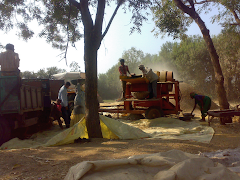DFA AND DFM
"Design For Assembly and Design For Manufacturing"
Design for Assembly (DFA) techniques aim to reduce the cost and time of assembly by simplifying the product and process through such means as reducing the number of parts, combining two or more parts into one, reducing or eliminating adjustments, simplifying assembly operations, designing for parts handling and presentation, selecting fasteners for ease of assembly, minimizing parts tangling, and ensuring that products are easy to test. For example, tabs and notches in mating parts make assembly easier, and also reduce the need for assembly and testing documentation. Simple z-axis assembly can minimize handling and insertion times.
The impact of DFA will be found throughout the overall design and manufacturing process. Use of DFA to reduce the number of parts will help reduce inventory, and so will help reduce inventory management effort. As a result, it will support activities such as Just In Time (JIT) aimed at improving shop-floor performance. Use of DFA to develop modular products making use of common parts will allow the variety desired by Marketing while limiting the workload on the Manufacturing function. Modular sub-assemblies can be built and tested independently. Model variations can be created at the subsystem level.
A variety of DFA checklists and guidelines is available. They provide statements of good practice, and prompt the designer to check, for example, that the number of parts in a sub-assembly is below a certain limit, that no unwieldy assembly operations are required, and that the number of different types of screws has been minimized. DFA is also supported by computer programs that assign scores to products as a function of their ease of assembly, and estimated assembly cost and time.
Companies using DFA techniques have reported reducing the number of parts, the number of assembly tools, the number of assembly operations, the assembly space, the number of suppliers, and the assembly time by up to 85 %.
Design for Manufacture (DFM) techniques are closely linked to Design for Assembly techniques, but are oriented primarily to individual parts and components rather than to DFA's sub-assemblies, assemblies, and products. DFM aims to eliminate the often expensive and unnecessary features of a part that make it difficult to manufacture. It helps prevent the unnecessarily smooth surface, the radius that is unnecessarily small, and the tolerances that are unnecessarily high.
DFA and DFM are closely linked to EDM/PDM and concurrent engineering. Designers should be able, through the EDM/PDM system, to access information that will help them improve the design of the part they are working with. They will be able to call up computer programs that can analyze the current state of their design, point out where the design is too complicated, and indicate possible areas of improvement. DFA and DFM are best carried out at the conceptual design stage, before major decisions about product and process characteristics have been finalized. At this early stage of the design, there may not be a lot of information to work with, but the EDM/PDM system will make sure that whatever information exists can be made available to the product team.
So in conlusion I can say following are the steps/point to be taken care for DFA and DFM:
- Simplify the design and reduce the number of parts.
- Standardize and use common parts and materials.
- Design for ease of fabrication.
- Design within process capabilities and avoid unneeded surface finish requirements.
- Mistake-proof product design and assembly.
- Design for parts orientation and handling.
- Minimize flexible parts and interconnections.
- Design for ease of assembly.
- Design for efficient joining and fastening.
- Design modular products.
- Design for automated production.
- Design printed circuit boards for assembly.



No comments:
Post a Comment